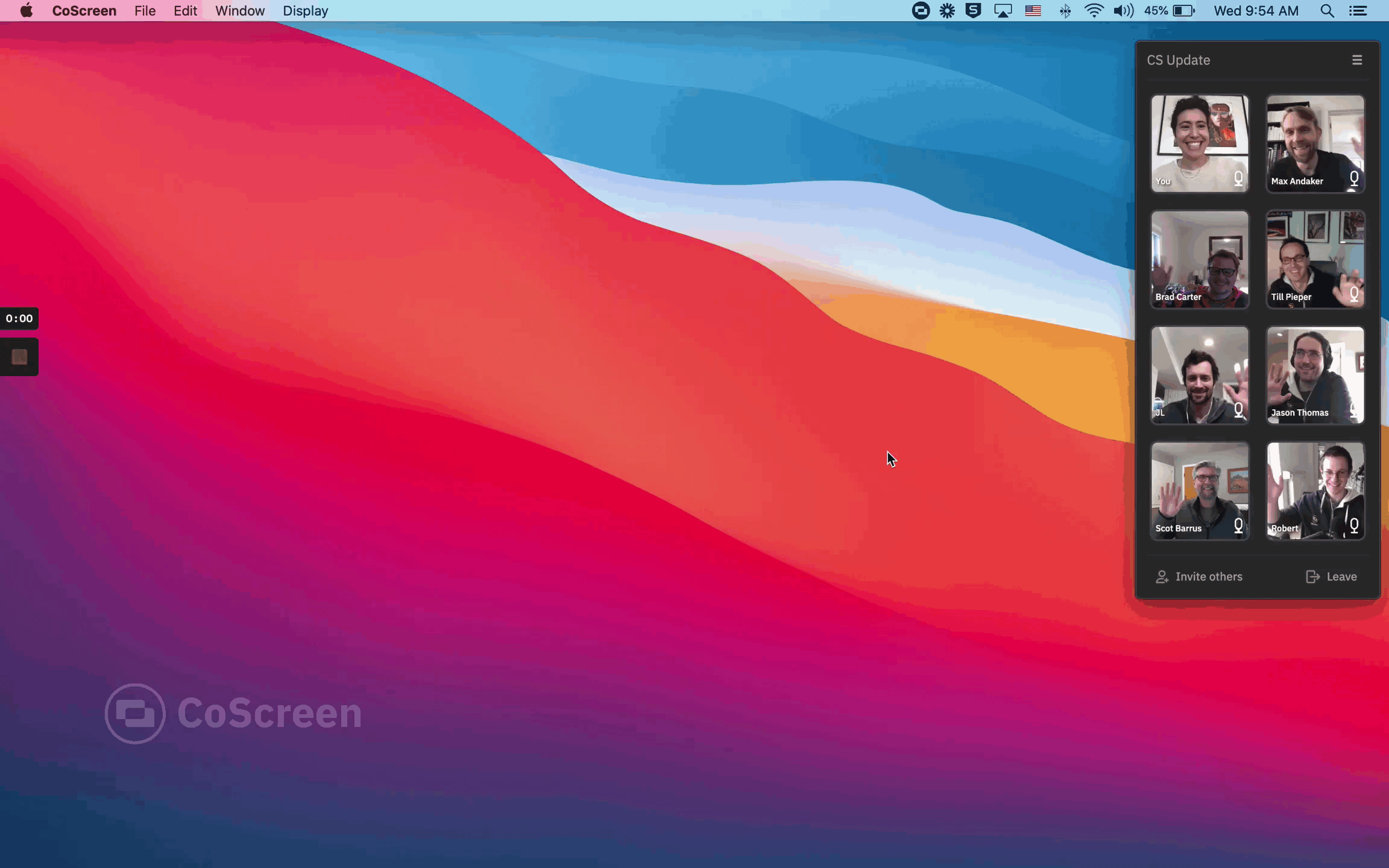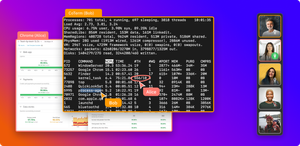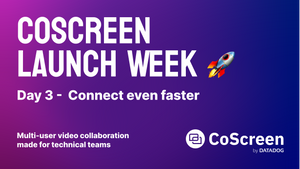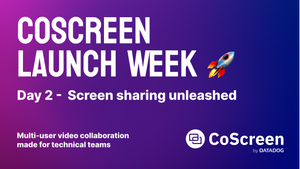For much of the 2010s, workplace design was experiencing a renaissance. Companies were beginning to understand the importance of collective serendipity and the sparks of innovation that can happen when people have natural, unplanned, informal meetings and discussions.
We keep saying that those in-office serendipity moments were spontaneous, but in fact, there was a lot of research, science, money, and thought that went into creating a serendipitous environment in the workspace. Companies were directing architects and designers to create office spaces that encouraged employees to mingle and talk spontaneously.
Then, the pandemic struck, and everyone had to go home. Literally. We had to abandon all together those serendipity moments, and many companies and teams were left without those spontaneous interactions.
It might seem like collective serendipity, which spawns creative new ideas in unexpected ways, is another casualty of working with remote teams. But collective serendipity is still possible. You just need the right tools and the right approach to make it happen. However, we just need to shift our thought into creating the feeling of serendipity in a remote or hybrid setting.
Adopt a Mindset That Embraces Serendipity
In companies and industries driven by data and analytics, the idea of serendipity — or some might call it luck — might seem frivolous. Strict adherence to a “time is money” philosophy leaves little room for employees to spend time making small talk.
But those informal conversations have led to some of the world’s most well-known products. The most famous might be 3M’s Post-it Notes, which were developed by Arthur Fry after hearing about a colleague who created a new adhesive but had no marketable use for it.
Indeed, serendipity has been shown to be a critical concept in business that should not be underestimated. Researchers at the University of California-Berkeley found that in the pharmaceutical industry, for example, serendipitous moments are “a crucial engine of progress and knowledge creation.”
Pharmaceuticals, medical technology, and highly technical and data-based industries have seen several innovations arise from serendipitous moments, including Viagra, penicillin, and X-rays.
Serendipity, by definition, can’t be forced or scheduled to happen. But companies can create the conditions under which it does occur. Anyone attempting to create those conditions must first understand how collective serendipity happens.
The researchers at UC-Berkeley describe serendipitous encounters as when “a person engaged in a (latent or explicit) search for a solution finds themselves in a setting that enables a surprising association between previously unconnected pieces of information, jointly leading to an unexpected solution.”
Or, in more plain terms, someone with a problem has a chance encounter with someone else who just happens to have an unexpected yet effective answer.
These kinds of encounters are surprisingly common. Someone looking for a job meets a contact at a networking event. A person who needs a place to live runs into an old friend who needs a roommate.
And, of course, they happen in business settings. Or at least they did before the pandemic forced everyone to work from home. Companies that want to recapture that magical serendipity now need to be intentional about creating the right conditions for it to happen.
For Remote Teams, Collective Serendipity Has to Be Facilitated
In the pandemic era, spontaneous meetings are few and far between. Because they typically involve some form of video conferencing, they have to be scheduled with meeting invites and Zoom links. After the meetings are over, people just retreat back to asynchronous work.
Furthermore, “Zoom fatigue” is real, as people find them exhausting, unproductive and want to keep meetings to a bare minimum.
For the time being, video conferencing software is the primary and maybe only way companies can get their employees to gather. So they need to be intentional about creating the conditions that allow people to have spontaneous conversations.
Here are a few ways one talent search firm recommends companies create those conditions for remote teams:
- Make it clear to employees that they can take time away from their “productive” work during the day to just talk with colleagues. This encourages the spontaneous sharing of ideas and brainstorming sessions.
- It may sound counterintuitive, but set time aside for serendipity. As we said above, spontaneity can’t be planned, but giving people a designated time will reduce the pressure to keep their heads down and make unplanned conversations more likely.
- Get leadership on board. Serendipity doesn’t look like productive work, so make sure company executives buy into the idea and avoid pressuring employees to get back to work.
Another challenge in creating collective serendipity among remote teams is that it’s difficult to bring people from different departments together. The best office spaces force people to get up from their desks to go to common areas like break rooms. This makes it more likely that people who don’t regularly interact will have spontaneous meetings.
With remote work, it’s too easy for employees to default to their close circle of friends and team members and nearly impossible for them to “bump into” someone from another department or team. So companies will need to find ways to bring people together.
This can take many forms, from open Zoom “water-cooler” rooms, brainstorming sessions, to cross-functional virtual lunches. The idea is to recreate the conditions, as much as possible, under which people have chance meetings or conversations.
Or, to put it bluntly, to “force” employees who don’t know each other to connect and interact. It may sound heavy-handed, but if you do it subtly, it will seem more natural.
At CoScreen, for example, we encourage the team to have casual 1:1 sessions with members outside of their department and have bi-weekly virtual lunches together where we play virtual games, share news or chat about shared hobbies - We can say that it has been successful for the team to bond and spark relationships beyond work.
The key is to not overthink it. Remember, this is about informal discussions, not structured meetings, so it’s important to let them flow naturally. No water-cooler discussion ever began with the intention of coming up with a new innovation. They start with small talk about the weather, sports, or movies and take on a life of their own.
So, make the meetings playful and fun, so people feel comfortable. If a specific agenda unencumber people, their minds and conversations will go to unexpected places, whereas a structure will focus on a single task.
Most importantly, give people a chance to connect. While many people enjoy working from home, most still have the need to socialize and make human connections, which are the foundation of collective serendipity.
Leverage Digital Collaboration Tools That Can Help
Since you can’t have office gatherings (for now) you may need to get creative with the digital collaboration tools you have. We mentioned the virtual lunches above. Some companies have taken that a step further, setting up dedicated “Zoom Rooms” or “CoScreen Rooms” that are open all day. People can come and go as they please, and only small talk is allowed.
At CoScreen, we set specific rooms on CoScreen, that are open all day and create a feeling of a virtual office for people to pop in to say hi, drink coffee together, stay updated on news or just hang out and take a break - like you would in a co-located office.
There are other tools that have been designed specifically for serendipity. Donut, for example, was designed as an online water cooler, allowing peers to meet, connect, and learn from each other.
Serendipity can also occur during “productive” work and deep collaboration. CoScreen’s capabilities allow people to discuss ideas and even start to build them out. By sharing a screen and a terminal, two or more people can work on a project together as if they were in the same room.
Plus, the high-quality audio and video make the interactions seem more natural and let employees seamlessly go from chance encounter to ideation to execution.
You can always keep a CoScreen session open (some of our users keep it going for 8-9 hours) as a virtual office space where you can ask for an opinion on a design you are working on, share something with the team or just treat it as a break room to vent on your roommates.

It’s About the People
The significant thing to remember is that work is about people. Most people have a natural need to connect and collaborate, and when that happens, that’s when innovation can occur.
But you have to let it happen naturally. You can’t force it. You have to give your people as many opportunities as possible to connect on a human level, even if they’re seeing each other through a screen.
You need to put as much thought into remote or hybrid serendipity as you did for in-office serendipity.






